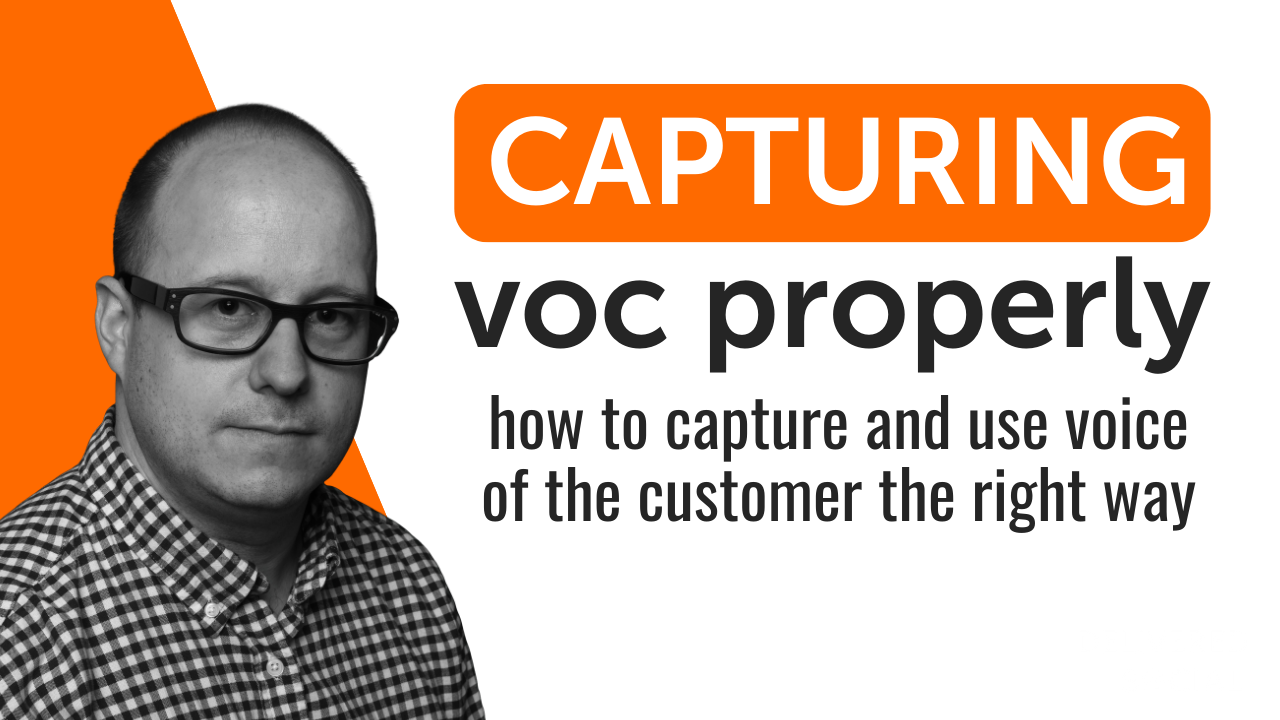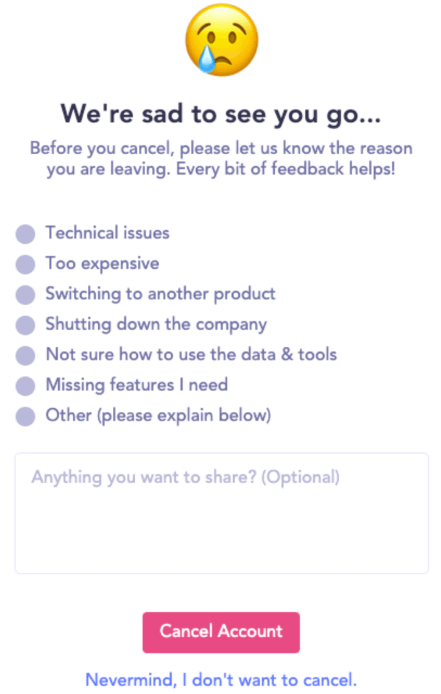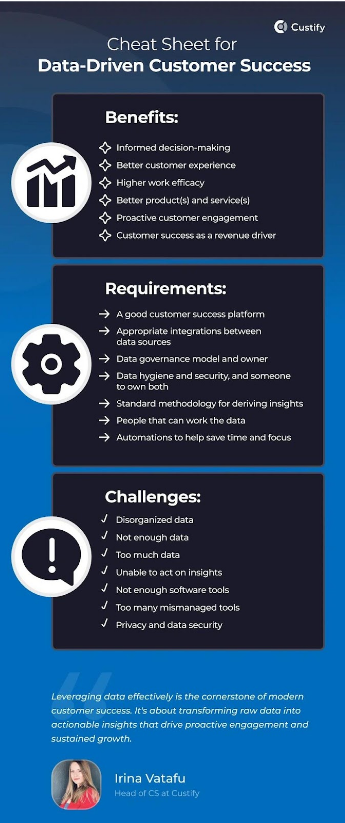
The voice of the customer is typically unheard and unappreciated. Businesses might assume that as long as they’re hitting their sales KPIs, they don’t need to worry about anything else. And it makes sense because it’s difficult to keep fine tuning their products and changing their business strategy.
Over time, the gap between customer expectations and product offerings widens until things quickly spiral out of control, and they start to notice that their funnel is leaking. In other words, they’re losing customers, without knowing the reason. How should they pivot? What should they do?
Voice of the Customer (VoC) is a safety net to prevent such disasters. It’s a structured strategy to discover customer sentiments (their behavior and feedback) to improve customer experience. It’s a structured strategy in the sense that it has its own objectives, methodologies, and KPIs, and businesses need to run it alongside other strategies to keep their finger on the pulse of customer experience.
The question is “how should you run a Voice of the Customer (VoC) strategy?” Let’s find out.
1- Have clear objectives for your VoC strategy
Before you start your VoC strategy, you need to take a moment to figure out what you’re hoping to achieve with it. You might want to consider different methods in your VoC strategy to achieve each of these objectives. You might be interested in
- Identifying pain points in the customer journey → Use customer support tickets and chatbot interactions to find recurring issues. For example, Amazon analyzes customer complaints to refine product descriptions and streamline checkout processes.
- Enhancing product development with real user insights → Conduct beta testing programs and in-app feedback collection. For instance, Slack uses in-app surveys to gather user feedback on new features before a full rollout.
- Improving customer service processes → Monitor sales tools, call center recordings and chatbot performance. Zappos, for example, uses call monitoring and sentiment analysis to enhance agent training and reduce resolution time.
- Boosting customer loyalty and advocacy → Implement Net Promoter Score (NPS) surveys and social media listening. Apple regularly engages with high-NPS customers in an attempt to turn them into brand ambassadors.
- Reducing churn and increasing retention → Track exit survey data and analyze customer behavior. Spotify, for example, uses listening habits and churn prediction models to personalize retention offers for at-risk users.

2- Identify Key Customer Touch Points
A voice of the customer strategy involves gathering data on how your customers engage with you and your products. For this, you need to monitor customer behavior in different touch points or reach out to them there and gather their responses. These touchpoints vary across industries but typically include:
- Website interactions (e.g., browsing behavior, chat support, checkout process)
- Customer service interactions (phone, email, or live chat support)
- Product or service usage (how customers engage with your offerings)
- Social media and online reviews
- Surveys and feedback forms
3- Use Multiple Feedback Channels
To make your VoC results more accurate and trustworthy, you need to increase and diversify your input data. In other words, you need to gather data from more customers and on different channels. An effective VoC program uses a combination of these channels:
- Surveys: Structured questionnaires can collect both quantitative and qualitative feedback. Tools like Net Promoter Score (NPS), Customer Satisfaction Score (CSAT), and Customer Effort Score (CES) help measure different aspects of customer experience.
- Interviews & Focus Groups: Speaking directly with customers allows for in-depth insights into their needs, challenges, and expectations.
- Social Media Listening: Monitoring platforms like Twitter, Facebook, and LinkedIn can reveal unsolicited feedback and emerging trends.
- Online Reviews & Forums: Customers often share detailed opinions on platforms like Google Reviews, Trustpilot, and Reddit.
- Customer Support Interactions: Analyzing inquiries, complaints, and support tickets can highlight recurring issues and opportunities for improvement.
4- Ensure Timely and Contextual Feedback Collection
Timing is everything when it comes to VoC. The best insights come from customers who are actively engaged with your brand. Consider these approaches for collecting feedback at the right moments:
- Post-Purchase Surveys: Immediately after a customer completes a transaction, ask about their experience with the purchase process.
- On-Site Feedback Widgets: Live chat and pop-up surveys on your website can capture real-time reactions.
- Customer Support Follow-Ups: After resolving an issue, ask customers for feedback on the service received.
- Periodic Check-Ins: Regularly survey customers who have been using your product or service for an extended period to track satisfaction trends.
5- Analyze and Interpret Customer Feedback
Collecting feedback is just the first step. The real value of VoC lies in how you analyze and interpret the data to uncover actionable insights.
- Categorize Feedback: Group responses into themes such as product issues, service complaints, usability improvements, and feature requests.
- Use Text Analytics: AI-driven sentiment analysis tools can help analyze open-ended feedback at scale.
- Identify Trends: Look for recurring issues or consistent praise to prioritize improvements that will have the greatest impact.
- Compare Data Across Channels: Cross-referencing feedback from different sources helps validate findings and reduce bias.
6- Close the Feedback Loop
An open feedback loop is the one through which you don’t follow up with your customers, and it has a negative impact on customer experience. How to close the feedback loop?
- Acknowledge the Feedback: Let customers know you appreciate their input and are taking it seriously.
- Take Action on Common Issues: Prioritize changes based on the most frequently mentioned problems or requests.
- Communicate Changes: Share updates with customers on how their feedback has influenced improvements. This can be done through email, social media, or blog updates.
- Follow Up with Customers: After implementing changes, reach out to customers who provided feedback to let them know how their input shaped the outcome.
7- Integrate VoC Insights into Business Processes
How should you use VoC insights in your business? Here are some examples:
- Product Development
Sonos, a renowned audio equipment manufacturer, experienced significant customer dissatisfaction following the release of a problematic app. In response, the company acknowledged its oversight and committed to stricter pre-launch testing and the formation of a customer advisory board to incorporate user feedback directly into product development. This initiative aimed to prevent similar issues in the future and restore customer trust.
- Marketing Strategies
Victoria’s Secret has leveraged generative AI to enhance its marketing efforts. By analyzing customer data, the company tailors personalized marketing campaigns that resonate with individual preferences, leading to improved customer engagement and higher conversion rates. This approach ensures that marketing messages align closely with customer desires and expectations.

- Customer Support Training
Vimeo, a leading video hosting platform, emphasizes the importance of integrating customer feedback into its support services. By analyzing user interactions and feedback, Vimeo identifies common customer issues and trains its support teams accordingly. This practice enhances service quality and ensures that support staff are well-equipped to address prevalent customer concerns effectively.
- Operational Improvements
Procter & Gamble (P&G) has embraced artificial intelligence to refine its supply chain operations. By analyzing customer purchasing patterns and feedback, P&G optimizes inventory management and demand forecasting. This integration of customer insights into operational processes reduces inefficiencies and ensures that products are available to meet customer demand promptly.
8- Share VoC Insights Across the Organization
A successful VoC program involves more than just the marketing or customer service team. The insights gathered should be shared across departments to drive company-wide improvements.
- Create VoC Dashboards: Use data visualization tools and marketing dashboards to make insights easily accessible for all teams.
- Hold Cross-Department Meetings: Regularly discuss VoC findings to align different teams on customer-driven improvements.
- Encourage Employee Involvement: Foster a culture where employees across all levels prioritize customer feedback and take ownership of enhancements.
Finally: Regularly Update VoC Strategies
Customer preferences and market dynamics change over time, so VoC strategies should evolve as well. Regularly assess and refine your approach by:
- Reviewing VoC Metrics: Track key performance indicators (KPIs) such as NPS and CSAT over time.
- Experimenting with New Feedback Methods: Stay up to date with emerging technologies and trends in customer feedback collection.
- Soliciting Internal Feedback: Ask employees for input on how the VoC process can be improved for better efficiency.
- Iterating Based on Results: Continuously optimize your VoC initiatives based on what works best for your customers and business objectives.
Interested In Working Together?
Introducing Delivered Social. We’re The Most-Rated Digital Agency In Surrey & Hampshire – We’ve Got To Be Doing Something Right.
Delivered Social is a digital marketing agency with one mission—to help businesses grow. We’re famous in Guildford and Portsmouth for our social clinics. We believe in free advice. We build lasting relationships because our team prides itself on being helpful, which our clients appreciate.
If you are looking for a new website or an agency to manage your social media presence, we can help.
If you need something slightly different, here's a super handy list of all our services, or you can always email us.























